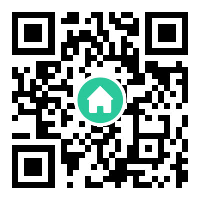Telegram web apps represent a groundbreaking evolution in the way users interact with chatbots and mini-programs within the Telegram ecosystem. By leveraging the platform’s extensive API and cloud infrastructure, these web apps enable seamless, instant experiences directly within Telegram chats or channels. Unlike traditional apps that require downloads or separate browser tabs, Telegram web apps are lightweight, fast, and deeply integrated into the messaging interface. This innovation not only enhances user convenience but also opens new possibilities for developers to create context-aware tools, games, and services tailored to Telegram’s global audience.

The Architecture of Telegram Web Apps
At their core, Telegram web apps are built using standard web technologies like HTML, CSS, and JavaScript. However, they are uniquely optimized for Telegram’s environment through the Telegram Web Apps SDK. This SDK provides developers with secure access to user-specific data, such as Telegram IDs and theme preferences, while maintaining privacy standards. The apps run within Telegram’s in-app browser, ensuring consistent performance across mobile and desktop clients. A key feature is the ability to communicate bidirectionally with bots, allowing real-time updates—such as order tracking or live polls—to be displayed without requiring page refreshes.
Use Cases Revolutionizing User Engagement
Telegram web apps are transforming industries by enabling frictionless interactions. E-commerce platforms now embed product catalogs and checkout systems directly into chats, reducing cart abandonment rates. Educational bots utilize web apps to deliver interactive quizzes or video lessons within a single interface. Cryptocurrency projects leverage them for wallet management and token swaps without exposing sensitive data. Even healthcare services employ Telegram web apps for appointment scheduling and telemedicine consultations. These examples highlight how the technology bridges the gap between messaging and actionable workflows.
Security and Privacy Considerations
Despite their web-based nature, Telegram web apps prioritize security through multiple layers of protection. All data transmissions use end-to-end encryption when interacting with bots that have E2EE enabled. The platform’s authorization system ensures apps only access user data with explicit permission, displayed through Telegram’s native permission prompts. Additionally, Telegram’s content security policies prevent malicious scripts from accessing external domains unless whitelisted. Developers must undergo verification processes to publish web apps, creating a curated ecosystem that minimizes phishing and data leaks.
Monetization Opportunities for Developers
The Telegram Web Apps platform introduces innovative revenue models through its built-in payment system. Developers can integrate Telegram Payments to sell digital goods or premium features without redirecting users to third-party processors. Subscription-based services benefit from recurring billing tied to Telegram accounts. Advertising partnerships become more targeted due to the contextual nature of chat-based apps. Notably, Telegram takes 0% commission on in-app transactions until 2025, creating a lucrative window for early adopters to build profitable solutions.
Future Developments and Ecosystem Growth
Telegram’s recent updates signal ambitious plans for web apps. The upcoming Fragment blockchain integration will enable decentralized identity verification and NFT-based app ownership. Enhanced AR capabilities through camera access in web apps could revolutionize social commerce. With over 800 million active users, Telegram is incentivizing developers through hackathons and grants to expand its web app catalog. As 5G adoption accelerates, expect richer media experiences and AI-powered web apps that leverage Telegram’s distributed server network for low-latency processing.
Conclusion
Telegram web apps are redefining the boundaries of conversational interfaces by merging messaging convenience with full-stack functionality. Their cross-platform compatibility, combined with Telegram’s massive user base and privacy-first approach, positions them as a formidable competitor to traditional app stores and web services. As developers continue exploring this sandbox, we anticipate a surge in creative applications that blur the lines between communication and computation, ultimately making Telegram not just a messaging app, but a self-contained digital universe.











